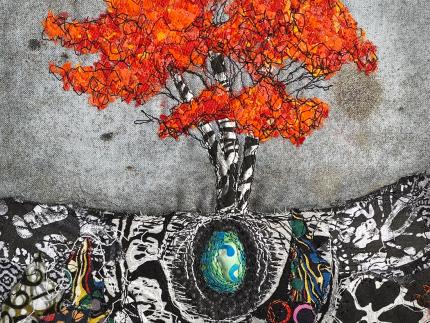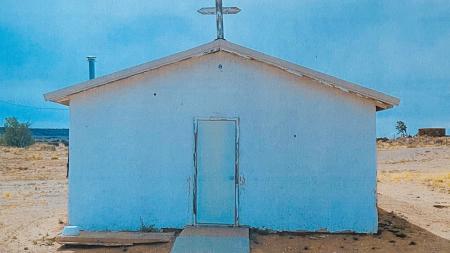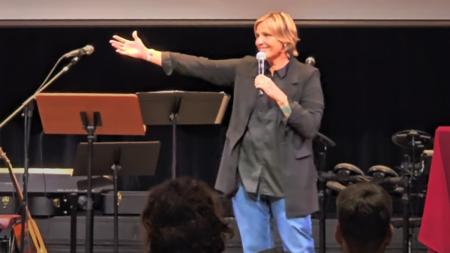Sharing God’s Dignity with Others

In the kickoff for its 2021 Safe Church Ministry Webinar Series: On Being a Safe Church, Amanda Benckhuysen, Safe Church director, discussed the biblical perspective on human dignity and how this connects to our way of being together and participating as members of God’s church.
A former professor of Old Testament studies at Calvin Theological Seminary, Benckhuysen began her online presentation — the first in a series about helping to create safe spaces for everyone — by referring to Genesis 1:26-28, which talks about God creating humans in his own image so that they may “rule over the fish in the sea and the birds in the sky . . . and over all creatures that move along the ground.”
The text continues by saying, “So God created mankind in his own image, in the image of God he created them; male and female he created them.”
These verses, right at the start of Scripture, lift up the living, breathing value of human beings as image bearers of God. So it is clear from the beginning of the Bible that humankind holds a special place in creation.
“We are God’s manifestation in the world. . . . We mediate God’s presence to the world and each other. This tells us about the value of human beings,” said Benckhuysen.
We are not gods ourselves, she said, but there is a profound intimacy between God and humankind, and, looking at the verses in Genesis, we see that by being made in the image of God, we are all sons and daughters of God; we are equal; we all can use the power God has given us to steward the world’s resources in wise and sustainable ways.
“We all represent God’s reign . . . and this is a gift that God has given us,” she said.
Being created in the image of God, we ought to be curious how God is at work in others. At the same time, said Benckhuysen, we should realize that regardless of skin color, gender, social class, nationality, age, race, sexual orientation, or physical or mental capabilities, we can’t erase the fact that we are all made in God’s image.
But then there is sin — as represented by Adam and Eve eating the forbidden fruit — that can separate us from God, making it so that “the power and authority that God has given us can be used to serve ourselves” — and satisfy our own desires, she said.
We don’t need to be left in misery, however, swamped by sin and estranged from God, because God chose a people through whom a Savior would come to wipe away sin.
Benckhuysen mentioned Leviticus 19:1-2, which reads: “The Lord said to Moses, ‘Speak to the entire assembly of Israel and say to them: “Be holy because I, the Lord your God, am holy.”’”
Just as the Lord is holy, we are called to be holy as God’s people. And for us to be holy, “we must protect the dignity of others. . . . God calls a people to engage in protecting the sanctity and dignity of life,” said Benckhuysen.
By living out God’s call, we are bound up in the dignity of others; we rise and fall together. We are entwined in and bolstered by one another; we all share the same sacred image.
“Our dignity and humanity are expressed and heightened when we protect the dignity and humanity of others,” Benckhuysen said.
Prophets pick up on this notion; we can’t worship and live for God on our own; we need to attend to others; worship and action within community properly fit together; but “the litmus test is how we act, how we treat people who are poor, how we treat other people in our midst. This is not peripheral to the gospel; this is the gospel,” said Benckhuysen.
Jesus embodied the truest expression of living a life of complete obedience and faithfulness to God. He was God in human form; he showed us the way to live if we want to honor all that is holy in us.
Paul says that Jesus is the new Adam, the perfect image of God, and that he lived out God’s rule and reign perfectly, said Benckhuysen.
But how did Jesus put into action these beliefs, this call by God? He did it by being a friend of sinners; he went to people and did not wait for them to come to him; he had priority for the poor.
“This work of Jesus was not merely a part of his ministry — it was his ministry,” she said.
In Jesus, the blind received sight, the lame walked, the dead were risen, and the good news was proclaimed in all places.
“This suggests Jesus’ ministry was about restoring creation to its original goodness. Those cast out by society got the attention of Jesus, much to the chagrin of the religious leaders,” said Benckhuysen.
“Jesus came to heal, to restore, to live out a new creation — to invite us, empowered by the Holy Spirit, to live a different way of being in this world.”
Jesus reminded us we are not drifters; nor are we people trying to seize the most out of this life. “We are reminded that we have a place with God, working to disrupt patterns of indignity in this world,” said Benckhuysen.
Making the switch and being reminded that Jesus showed and invited us into a new way of life can be difficult. But there are rewards.
“When I turn from focusing my thinking on my own needs and concerns to what the needs and concerns of others are, I find that I am more fully living out the life God created for me to do,” Benckhuysen said.
To view the webinar and share it with others, visit this link.
The next webinar in the series is scheduled for June 9 (12:00-1:00 p.m., EDT). Anne Martin (director of Restorative Practices) and Mark Vander Vennen (executive director of Shalem Mental Health) will discuss being restorative congregations in the aftermath of the COVID-19 pandemic. Register for the webinar here.
In addition, on June 23 (7:30-9:00 p.m., EDT), there will be a free restorative practices workshop. Visit this link to find out more information and to register for the workshop.


